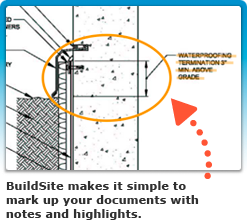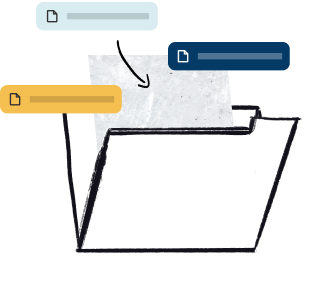Abstract
This specification covers coal fly ash and raw or calcined natural pozzolan for use in concrete where cementitious or pozzolanic action, or both, is desired, or where other properties normally attributed to fly ash or pozzolans may be desired, or where both objectives are to be achieved. Fly ash and natural pozzolans shall conform to the prescribed chemical composition requirements and physical requirements. The materials shall be tested for fineness, strength activity index, water requirement, soundness, and autoclave expansion or contraction.
This abstract is a brief summary of the referenced standard. It is informational only and not an official part of the standard; the full text of the standard itself must be referred to for its use and application. ASTM does not give any warranty express or implied or make any representation that the contents of this abstract are accurate, complete or up to date.
1. Scope
1.1 This specification covers coal fly ash and raw or calcined natural pozzolan for use in concrete where cementitious or pozzolanic action, or both, is desired, or where other properties normally attributed to fly ash or pozzolans may be desired, or where both objectives are to be achieved.
Note 1—
Finely divided materials may tend to reduce the entrained air content of concrete. Hence, if a fly ash or natural pozzolan is added to any concrete for which entrainment of air is specified, provision should be made to ensure that the specified air content is maintained by air content tests and by use of additional air-entraining admixture or use of an air-entraining admixture in combination with air-entraining hydraulic cement.TABLE 1 Chemical Requirements
| Class |
| N | F | C |
| Silicon dioxide (SiO2) plus aluminum oxide (Al2O3) plus iron oxide (Fe2O3), min, % | 70.0 | 70.0 | 50.0 |
| Sulfur trioxide (SO3), max, % | 4.0 | 5.0 | 5.0 |
| Moisture content, max, % | 3.0 | 3.0 | 3.0 |
| Loss on ignition, max, % | 10.0 | 6.0A | 6.0 |
A The use of Class F pozzolan containing up to 12.0 % loss on ignition may be approved by the user if either acceptable performance records or laboratory test results are made available.
TABLE 2 Physical Requirements
| Class |
| N | F | C |
| Fineness: |
| Amount retained when wet-sieved on 45 μm (No. 325) sieve, max, % | 34 | 34 | 34 |
| Strength activity index: A |
| With portland cement, at 7 days, min, percent of control | 75B | 75B | 75B |
| With portland cement, at 28 days, min, percent of control | 75B | 75B | 75B |
| Water requirement, max, percent of control | 115 | 105 | 105 |
| Soundness: C |
| Autoclave expansion or contraction, max, % | 0.8 | 0.8 | 0.8 |
| Uniformity requirements: |
| The density and fineness of individual samples shall not vary from the average established by the ten preceding tests, or by all preceding tests if the number is less than ten, by more than: |
| Density, max variation from average, % | 5 | 5 | 5 |
| Percent retained on 45-μm (No. 325), max variation, percentage points from average | 5 | 5 | 5 |
A The
strength activity index with portland cement is not to be considered a measure of the compressive strength of concrete containing the fly ash or natural pozzolan. The mass of fly ash or natural pozzolan specified for the test to determine the
strength activity index with portland cement is not considered to be the proportion recommended for the concrete to be used in the work. The optimum amount of fly ash or natural pozzolan for any specific project is determined by the required properties of the concrete and other constituents of the concrete and is to be established by testing.
Strength activity index with portland cement is a measure of reactivity with a given cement and is subject to variation depending on the source of both the fly ash or natural pozzolan and the cement.
B Meeting the 7 day or 28 day
strength activity index will indicate specification compliance.
C If the fly ash or natural pozzolan will constitute more than 20 % by mass of the cementitious material in the project mixture, the test specimens for autoclave expansion shall contain that anticipated percentage. Excessive autoclave expansion is highly significant in cases where water to cementitious material ratios are low, for example, in block or shotcrete mixtures.
TABLE 3 Supplementary Optional Physical Requirements
Note 1—
These optional requirements apply only when specifically requested. | Class |
| N | F | C |
| Increase of drying shrinkage of mortar bars at 28 days, max, difference, in %, over controlA | 0.03 | 0.03 | 0.03 |
| Uniformity Requirements: |
| In addition, when air-entraining concrete is specified, the quantity of air- entraining agent required to produce an air content of 18.0 vol % of mortar shall not vary from the average established by the ten preceding tests or by all preceding tests if less than ten, by more than, % | 20 | 20 | 20 |
| Effectiveness in Controlling Alkali-Silica Reaction:B |
| Expansion of test mixture as percentage of low-alkali cement control, at 14 days, max, % | 100 | 100 | 100 |
| Effectiveness in Contributing to Sulfate Resistance:C |
| Procedure A: |
| Expansion of test mixture: |
| For moderate sulfate exposure after 6 months exposure, max, % | 0.10 | 0.10 | 0.10 |
| For high sulfate exposure after 6 months exposure, max, % | 0.05 | 0.05 | 0.05 |
| Procedure B: |
| Expansion of test mixture as a percentage of sulfate resistance cement control after at least 6 months exposure, max,% | 100 | 100 | 100 |
A Determination of compliance or noncompliance with the requirement relating to increase in drying shrinkage will be made only at the request of the purchaser.
B Fly ash or natural pozzolans meeting this requirement are considered as effective in controlling alkali silica reactions as the use of the low-alkali control cement used in the evaluation. However, the fly ash or natural pozzolan shall be considered effective only when used at percentages by mass of the total cementitious material equal to or exceeding that used in the tests and when the alkali content of the cement to be used does not exceed that used in the tests by more than 0.05 %. See Appendix XI, Test Methods
C311.
C Fly ash or natural pozzolan shall be considered effective only when the fly ash or natural pozzolan is used at percentages, by mass, of the total cementitious material within 2 % of those that are successful in the test mixtures or between two percentages that are successful, and when the C
3A content of the project cement is less than, or equal to, that which was used in the test mixtures. See Appendix X2 of Test Method
C311.
1.2 The values stated in SI units are to be regarded as standard. No other units of measurement are included in this standard.
1.3 The text of this standard references notes and footnotes, which provide explanatory information. These notes and footnotes (excluding those in tables and figures) shall not be considered as requirements of the standard.
Reproduced, with permission, from the ASTM International website, copyright ASTM International, 100 Barr Harbor Drive, West Conshohocken, PA 19428. To purchase the complete standard, go to http://www.astm.org/.



